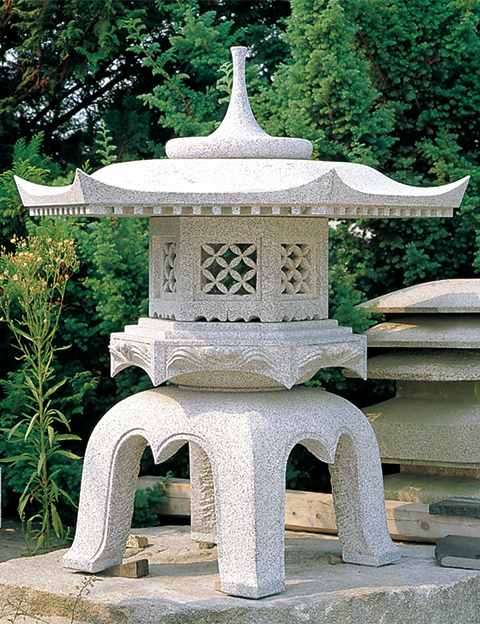MAKABE Ishidoro (Stone Lanterns)

The high-quality granite found in the Makabe area of Ibaraki Prefecture has been used to make a variety of useful items since ancient times. However, the actual working of stone in the area began around the end of the Muromachi era (1333-1568) with the making of Buddhist stone articles.
The earliest confirmed Makabe stone lantern is housed in a temple compound in Makabe-cho. It was made by Kubota Kichibei in 1824, who is credited with establishing the skills and techniques of the craft.
These lightly colored lanterns are characterized by their superb craftsmanship, including the light touch of the carving, and their sense of weightiness. Accentuated by the moss that tends to grow on them, these stone lanterns provide traditional Japanese gardens with an added quality and elegance. Items produced today include lanterns for garden, shrines and temples.
Feature
With their light color, superb sculpting, and air of softness, Makabe stone lanterns are characterized by their beautiful grace and their weight. The growth of moss on these lanterns further enhances their character, which lends a sense of elegance and charm to every Japanese garden.
How to make
The first step is sumi-dashi, in which the design is drawn onto the stone using a carpenter’s square. Next, various traditional tools, including nomi hand chisels, koyasuke chiseling hammers and bishan bush hammers, are used to fashion the parts of the lantern. Except for the areas immediately above and below the lightbox (hibukuro), mortise and tenon joints are chiseled into the various stone parts, and the lantern is assembled with great care to ensure its balance.

